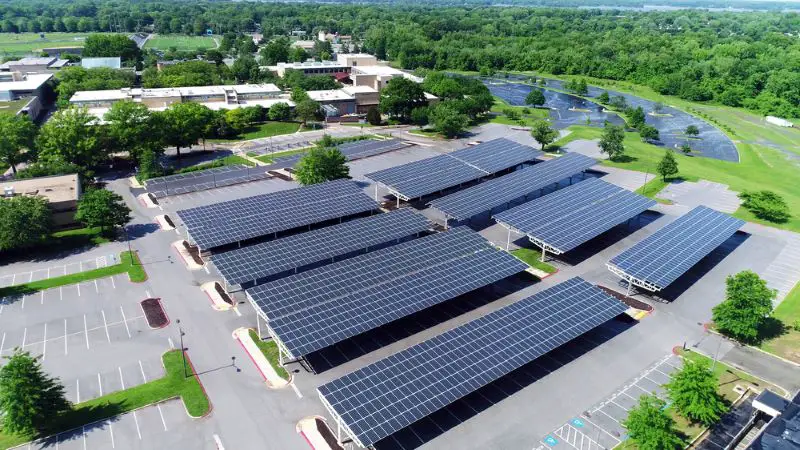Click here to get this post in PDF
Commercial solar systems represent a significant investment in sustainable energy. To ensure these systems provide optimal performance and return on investment, regular maintenance, monitoring, and management are crucial. This guide delves into essential maintenance tasks, effective monitoring techniques, and troubleshooting common issues to keep your commercial solar system running efficiently.
Regular Maintenance Tasks and Schedules
- Visual Inspections: Conducting regular visual inspections is the first step in maintaining your commercial solar system. These inspections should be performed at least quarterly to check for:
- Physical Damage: Look for cracks, chips, or scratches on the solar panels.
- Debris Accumulation: Remove leaves, dirt, and other debris that can obstruct sunlight.
- Loose Connections: Ensure all electrical connections are secure and corrosion-free.
- Cleaning Solar Panels: Dust, bird droppings, and pollution can accumulate on solar panels, reducing their efficiency. It’s advisable to clean the panels biannually or more frequently in particularly dusty environments. Use a soft brush or a sponge with mild soap and water. Avoid using harsh chemicals or abrasive materials that could damage the panels.
- Checking the Inverter: The inverter is a critical component that converts the solar panels’ DC electricity into AC electricity for use. Regularly check the inverter’s display for error messages and ensure it is operating within the manufacturer’s specified temperature range. Inverters should be inspected semi-annually.
- Monitoring System Performance: Utilise monitoring systems to track the performance of your solar panels in real-time. These systems can alert you to any drops in efficiency, enabling prompt action. Monitoring should be a continuous process, with weekly reviews of performance data to identify and address any anomalies.
Monitoring and Optimising Solar Panel Performance
- Performance Metrics: Key performance indicators (KPIs) to monitor include:
- Energy Output: Measure the total energy produced by the system.
- Performance Ratio: Calculate the ratio of actual vs. expected energy output.
- Capacity Factor: Determine the efficiency of the solar panels in converting sunlight into usable electricity.
- Use of Commercial Solar Optimisers: Incorporating commercial solar optimisers can significantly enhance the performance of your solar system. These devices maximise the energy harvest from each panel by mitigating issues like shading and panel mismatch. By using optimisers, you can ensure each panel operates at its maximum potential, increasing the overall efficiency of your system.
- Regular Data Analysis: Analyse the performance data regularly to identify trends and potential issues. This can involve:
- Comparing Historical Data: Look for patterns or deviations in performance over time.
- Weather Analysis: Correlate performance with weather conditions to understand environmental impacts.
- Anomaly Detection: Use software tools to detect sudden drops in performance, which could indicate technical issues.
Troubleshooting Common Issues
Identifying Common Problems:
- Inverter Failures: Check for error codes and ensure proper ventilation.
- Panel Hotspots: Inspect for physical damage or shading that could cause overheating.
- Electrical Issues: Look for loose connections or corroded components.
Resolving Issues:
- Inverter Resets: Sometimes, simply resetting the inverter can resolve minor faults.
- Replacing Faulty Panels: If a panel is damaged beyond repair, replacing it promptly ensures continued efficiency.
- Professional Servicing: Engage professional technicians for annual comprehensive inspections and servicing to pre-emptively address potential issues.
Preventive Measures:
- Install Surge Protectors: Protect the system from electrical surges.
- Ensure Proper Ventilation: Maintain adequate airflow around inverters and other components to prevent overheating.
- Secure Mountings: Regularly check and tighten all mounting hardware to withstand environmental conditions.
Proper maintenance and management of commercial solar systems are essential for maximising their efficiency and longevity
Regular inspections, cleaning, performance monitoring, and timely troubleshooting are key practices that ensure your investment continues to yield benefits. Incorporating advanced technologies like commercial solar optimisers further enhances system performance, helping you achieve the best possible returns on your sustainable energy investment. By staying proactive with maintenance and management, you can ensure your commercial solar system remains a reliable and efficient source of clean energy for years to come.
You may also like:
Improving Data Center Energy Efficiency Through Smart Power Supplies
How Solar Panels Can Improve Business Resilience to Energy Price Hikes
Image source: Depositphotos.com

